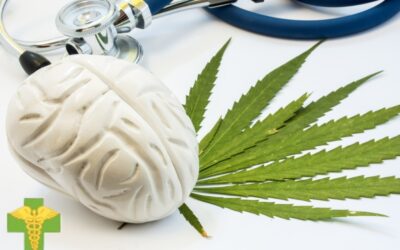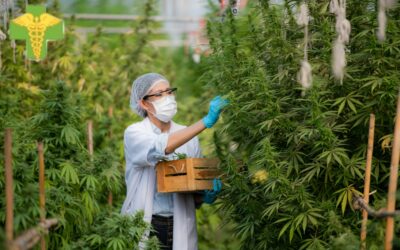Can Cannabis Treat Headaches?
Cannabis treatment for headaches is a hot topic these days, and for good reason. You have probably experienced a headache at some point in your life, as headaches are a common complaint among people of all ages. In fact, according to a study published by the Journal of the American Medical Association, tension headaches affect 40% of the U.S. population each year, and severe headaches known as migraines affect 6% of men and 18% of women. But these two types of headaches are not the only ones, there are several different classes of headaches, and marijuana is currently one of the most popular treatments for headache pain among Americans. Let’s talk about the different kinds of headaches you may experience:
Tension headache. Women are more susceptible to this type of headache than men, but most people have had a tension headache at some point. This headache is characterized by a dull, constant pain, felt on both sides of the head. This dull, throbbing pain is often accompanied by tenderness in the facial and neck muscles, sensitivity to light and sound, and pressure behind the eyes.
Allergy/ Sinus headache. This type of headache may be seasonal for some people who are sensitive to certain plants, molds, and spores. This headache also comes with pressure behind the eyes, tenderness in the neck and facial muscles – especially in the sinus area – and is often accompanied by swelling of the nasal passages and sometimes fever, congestion and/ or a runny nose.
Migraine. These headaches are often confused with sinus headaches, as symptoms can be similar. Migraines usually cause an intense throbbing pain on one side of the head,
and come with an increased sensitivity to light and sound. Movement can exacerbate symptoms, and a sensitivity to certain smells is also common, which can cause nausea and vomiting. Some migraine sufferers experience a visual aura before the headache comes on, such as seeing colored rings around objects, especially lights. They may also see flickering lights or moving “spots”. A migraine may also bring muscle numbness or weakness. Some women experience menstrual migraines with their monthly cycle; these sometimes disappear after childbirth and the resulting change in hormone levels. The relationship between marijuana and migraines has gained a lot of press in recent years due to the ability of cannabis to alleviate many, if not all, of the debilitating effects of a migraine headache, allowing the sufferer to function closer to normal and go about the usual activities of daily living.
Cluster headaches. People who suffer with this type of headache feel an intense burning or piercing pain behind or around one eye. These headaches are aptly names, as they can occur in a cluster up to eight times a day, sometimes lasting for weeks or even months. With these headaches, a person’s eyes may water, and their eyelids may swell. Nausea sometimes occurs due to the relentless nature of the headache cluster. Unlike tension headaches which occur mostly in women, these headaches are six times more likely to develop in men than in women.
Hypnic headaches. This is a rare type of headache which occurs while a person is asleep, usually affecting a man or woman over the age of 50. This type of headache has been dubbed the “alarm clock” headache, as it occurs only during sleep and often wakes the sufferer due to discomfort.
Exertional headaches. Strenuous physical activity such as running, working out, and lifting weights can bring on this type of headache. Any type of strenuous activity, including sexual intercourse, can cause an exertional headache. Symptoms include an overall throbbing pain throughout the head. These headaches are known to occur in people with a family history of migraines.
Rebound headache. These headaches are due to too-frequent use of pain medication to treat recurrent headaches such as cluster headaches, tension headaches, or migraines. Medications which pose the greatest risk are barbiturates and narcotics, but the American Migraine Foundation notes that triptans, ergotamines, and some over-the-counter pain medicines also carry a risk.
Several studies in recent years point to the efficacy of marijuana in treating all types of headache pain, although the reason marijuana is effective in relieving headache pain and other symptoms is not entirely clear. Researchers theorize that the anti-inflammatory compounds found in marijuana such as tetrahydrocannabinol (THC) and cannabidiol (CBD) help relieve the inflammation which leads to many types of headache pain. Another possibility involves cannabinoid receptors in the brain, which affect how pain is felt, and the interaction between these receptors and the cannabinoids THC and CBD. Cannabis has also been shown to help relieve the nausea associated with some types of headaches such as migraines. More research must be done into the relationship between marijuana and migraines, and with increasingly favorable legislation, scientists are hopeful that funding for this type of research will be available in the future.
Call us at Medical Alternatives Clinic in Colorado Springs today at (719) 246-0393, or email us at hello@medicalalternativesclinics.com with your questions about the best cannabis treatment for headaches, the relationship between marijuana and migraines, or to request an appointment. We are here to help you discover the best possible treatment option for your situation and offer our recommendations on which medical marijuana treatment may work for you. Our MMJ doctors want to assist you in any way we can to achieve relief from your symptoms. We are happy to provide you with a copy of any paperwork necessary for your records.






